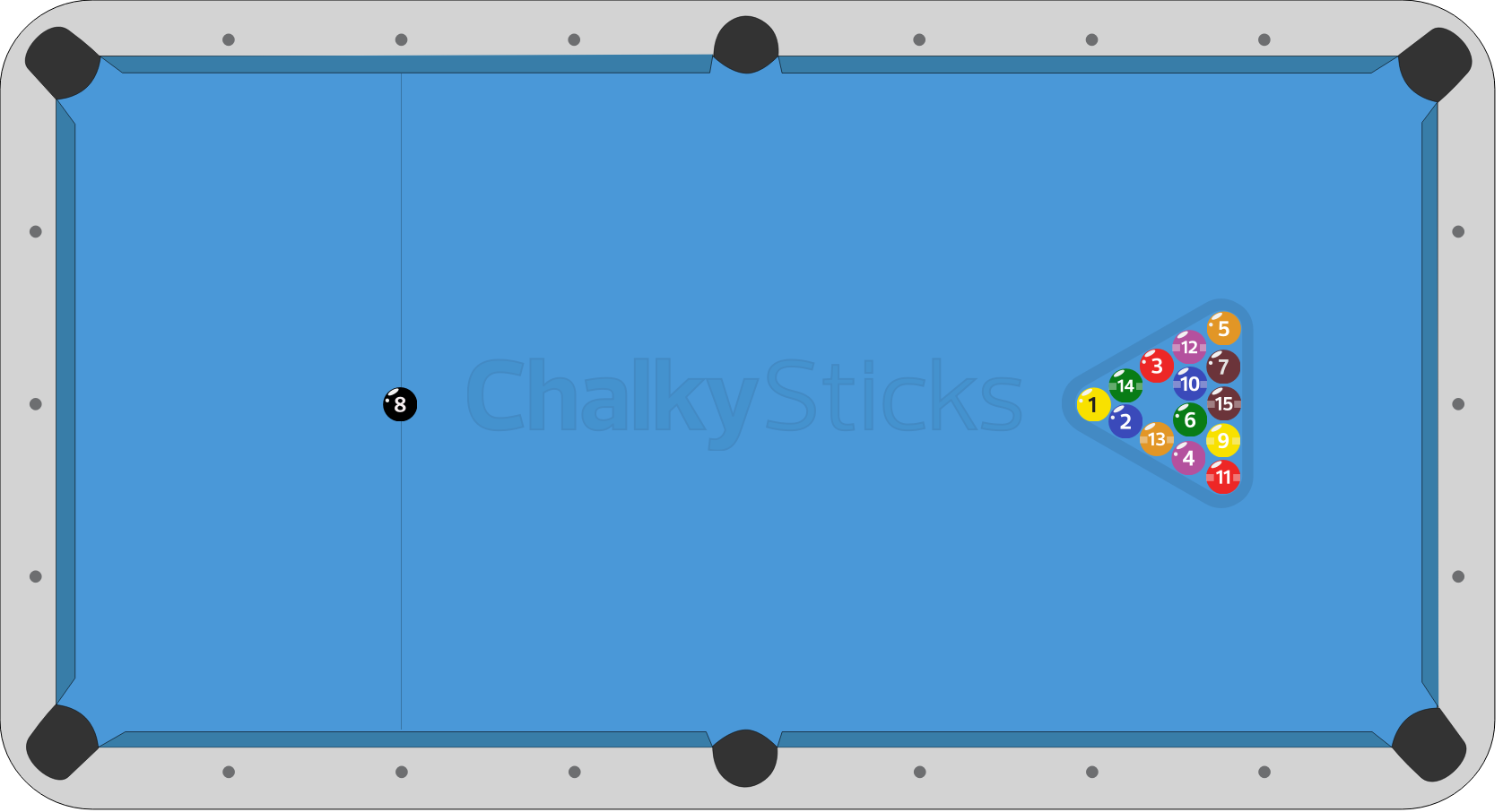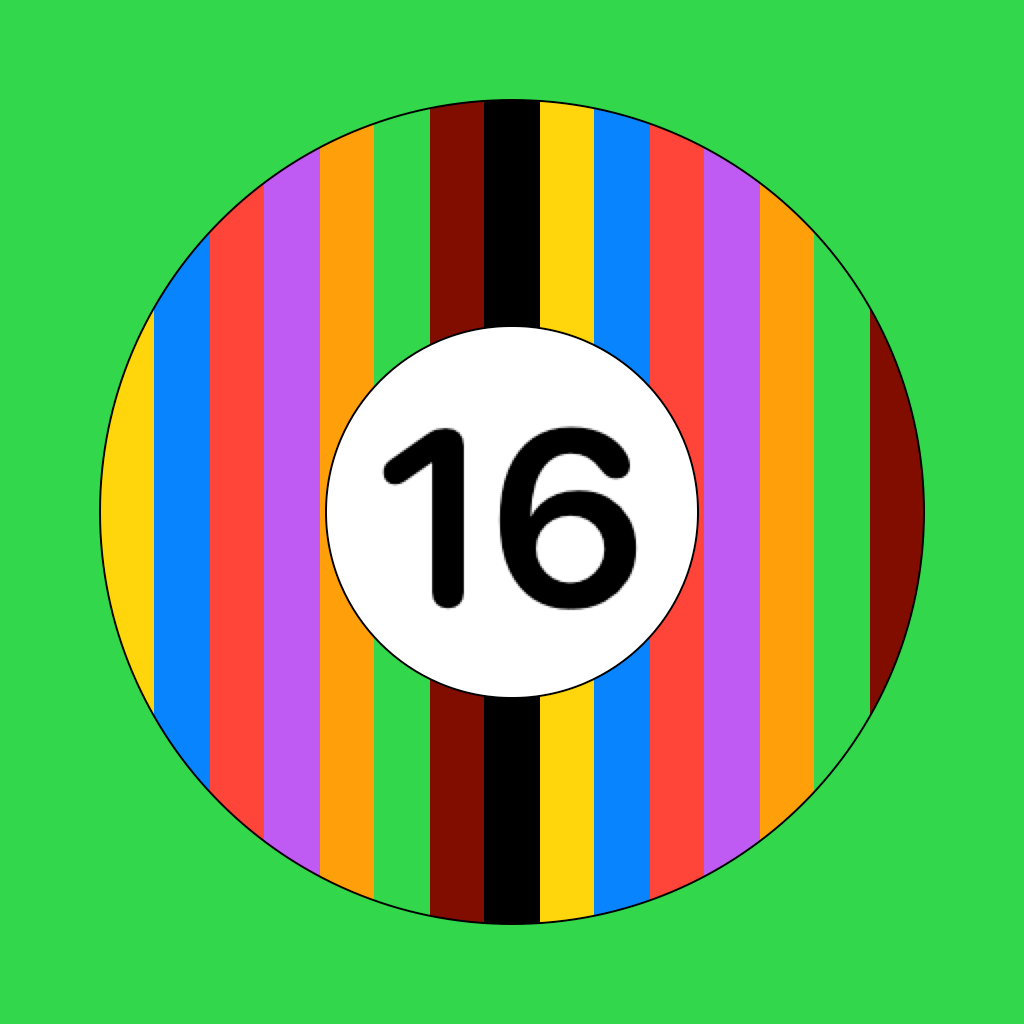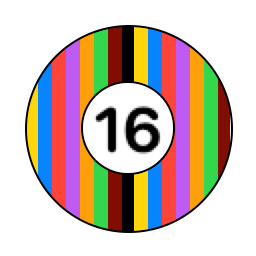This document describes the objective and rules of Sixteen-Ball. It should be enough to start playing in ~15 minutes. See the Official Rules page for detailed rules covering every situation.
Don't hesitate to reach out to us any time if you have suggestions for this page or find any omissions in the rules.
Objective
Players score points by pocketing pairs of balls that total 16. There are seven such pairs in a rack.
Only a single pair can be in-process at a time; starting a second pair is a foul.
Each pair is worth two points.
The 8-ball is pocketed last and is worth two points alone.
The first player to reach 16 points wins the game.
Terms
The second ball in a pair is known as the first ball’s partner (e.g. the 14-ball is the 2-ball’s partner, etc.).
The partner of the in-process pair is called the target ball.
Partner balls that can be legally pocketed but are not the target ball (e.g. after the break), are designated pending partner balls.
A ball whose partner is no longer on the table is rogue.
Rules
Players must call their shots as ball-in-pocket.
Any ball may be hit first in a combination, including the 8-ball.
The order in which balls are pocketed doesn’t matter as long as the called ball is pocketed in the specified pocket.
A player's turn ends if they foul (e.g. pocketing the called ball in the wrong pocket), fail to pocket the required target ball (more on that below), or miss.
The Rack
The Sixteen-Ball rack is similar to an eight-ball rack with the 8-ball removed and placed on the head spot. The remaining 14 object balls are racked as tightly as possible in a triangle shape with the 1-ball at the apex of the triangle and on the foot spot and the 15-ball in the middle of the last row, opposite the 1-ball.
The six remaining pairs are placed on opposite sides of the rack. Two pairs will be adjacent in the middle of the second and fourth rows. The placement of the specific pairs does not matter.
Example Rack
The diagram below shows a legal rack in which the 8-ball, 1-ball, and 15-ball are all in their required positions; the only the adjacent pairs in the second and fourth rows.

The Break
Players lag for the break. The winner's chooses who will break the first rack.
For the first break of the game, the cue ball must be behind the head string on either side of the 8-ball.
Subsequent breaks are made by the player sinking the last ball in the previous rack from the position of the cue ball after the final shot (as in straight pool).
The cue ball can not be hit into the 8-ball. Striking the 8-ball first on the break is a foul.
If the breaker fouls, the break passes to their opponent.
Any pair pocketed on the break immediately scores two points.
Because balls are not called on the break, the partner balls of any pocketed balls become pending partner balls. Each is worth two points.
Pending partner balls may be pocketed at any time during the shooters turn, including in the middle of a pair.
To complete pairs, the breaking player may either begin pocketing a new pair or sink pending partner balls.
Shooting
Each new pair started must be completed in sequence.
Pending partner balls may be pocketed at any time during the shooter's turn, including in the middle of a pair. Points are immediately awarded for any legally completed pairs including pending partner balls.
Rogue Balls
If a player fails to pocket a partner ball during their turn, it becomes rogue. No points are awarded for the first ball pocketed when a rogue ball is created.
Rogue balls may be pocketed by any player and score one point.
Rogue balls may be pocketed in the middle of a pair with the following caveat: If the target ball (i.e. the partner ball for the in-process pair) is not legally pocketed after one or more rogue balls are pocketed, all points for the rogue balls are awarded to the shooter's opponent. Thus, pocketing rogue balls can be used to overcome a bad leave or obtain superior table position if and only if the in-process pair is completed. Failure to do so benefits the shooter's opponent.
Pending partner balls have no such stipulation. They may be pocketed in the middle of a pair and points are immediately awarded to the shooter.
The 8-ball
The 8-ball should be pocketed last. It is not a legal called ball until it is the sole remaining ball.
If the 8-ball is pocketed in a legal shot in addition to the called ball, it sores two points for the shooter.
When pocketed out of turn or not as called, two points are awarded to the opponents.
When the 8-ball is pocketed, it is not pulled. Play continues until all balls have been legally pocketed.
After the final ball on the table is pocketed, the cue ball remains in position for the next break.

